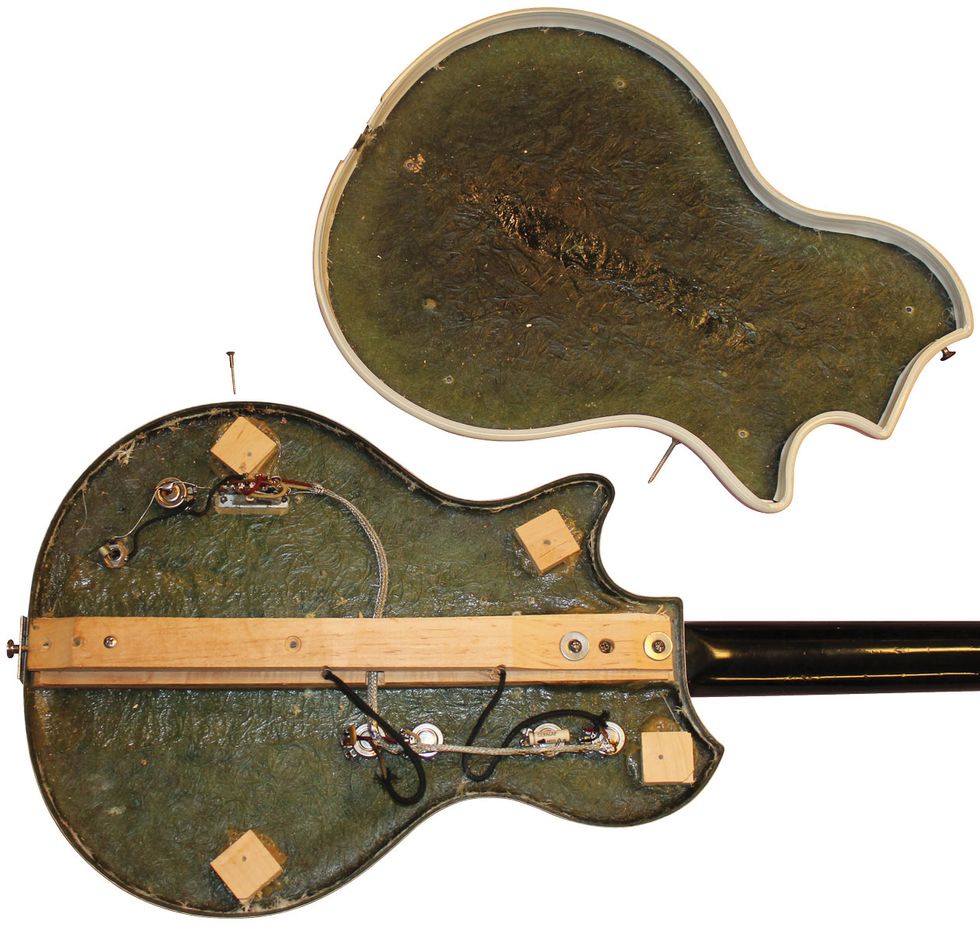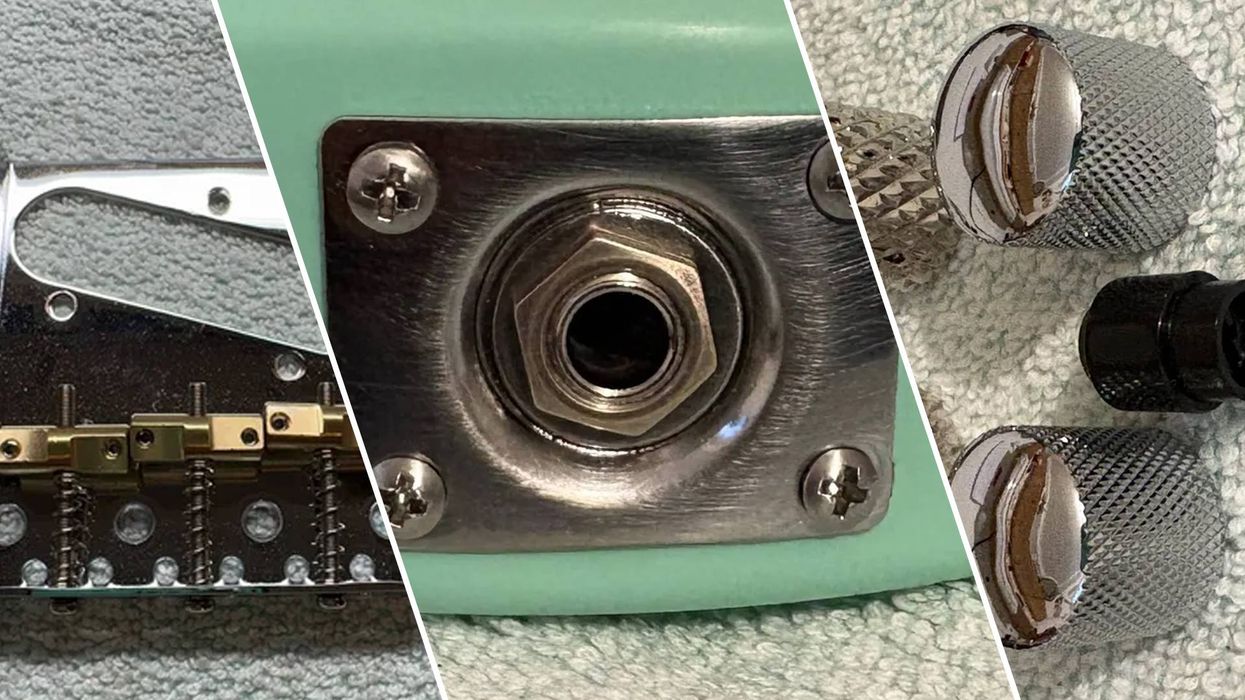In case you haven’t noticed by now, I really love old, strange guitars. Sure, I love a nice Les Paul or a well-worn Tele, but there’s something about the lesser-known brands I always find spellbinding. One of my first guitar loves was the Valco company and all their interesting additions to the guitar-playing universe.
Valco resided in Chicago, Illinois, nestled among two behemoths of guitar manufacturing back in the day—Kay and Harmony. Valco had been in business since the 1920s and gained fame for making fine resonator guitars. It was a small company by some standards but they did produce their own pickups, amps, and many other interesting guitars with wacky shapes and unique manufacturing techniques. (Ever hear of a Kord-King neck?)
In the early ’60s, Valco ventured into a new era with the introduction of fiberglass guitars. These “Res-O-Glas” guitars were touted as being durable, beautiful, and totally functional. Well, these new guitars were all that, but never really competed at any sustainable level.
I suppose the first time I ever noticed Valco guitars was when I saw the Dead Kennedys, and East Bay Ray was just ripping on one (and if anyone has ever figured out how to play “Ill in the Head,” please send me tabs). It must have been on some old poster I had hanging on my wall, or some zine clipping that I cut out, but I noticed Ray’s weird looking guitar and was smitten.
of fiberglass guitars.
In the following decades, I bought these Valco products whenever I could afford them and soon I was a member of the cult. Of course, Jack White really made Res-O-Glas guitars famous with the extensive use of his red Airline, and more recently Dan Auerbach has been playing his white Martinique (which retailed for a whopping $300 back in the early ’60s).
Truthfully, the first time I ever held one of the fiberglass guitars I honestly thought it was a toy. Seriously! These instruments are mostly hollow (except for a center block of wood), lightweight, and balance well. There is something about the hollow-ish construction and the hot Valco pickups that create an expressive instrument. Heck, I even obtained a copy of the Valco pickup design from the U.S. Patent Office, pre-internet. Bless you, Ralph Keller, for your awesome pickup design.
Now, as much as I like old guitars, amps, and effects, I also love old catalogs and advertising, and tucked away in a Music Trades magazine from 1962 was a superb article detailing Valco’s new fiberglass guitar-building techniques. Then-company-president Robert Engelhardt seemed to be the main force behind this production shift as Valco sought to make a more durable product that was immune to climatic change. Even though Mr. Engelhardt was described in the article as liking the “ring of a cash register about as well as the strum of a well-tuned string,” the company invested heavily in this strange way of building guitars. The story goes that in 1961 they began to revamp the factory and invest in the “new” technology.
Except for a center block of wood, Res-O-Glas instruments are mostly hollow.
Chief engineer Walter Churchill determined that Res-O-Glas bodies could save the company about 40 percent in production costs, so a large section of the factory was converted to the production of fiberglass guitars. Valco was making some 80 different electric guitar models at the time, and 10 new Res-O-Glas models were planned for production. Among these was the most popular: the Dual Tone. The Dual Tone had existed as a production guitar for many years, but at this time the formula changed and a brand-new model was offered to the masses.
I think I’ve owned, at one time or another, just about every version of Res-O-Glas guitar that Valco ever produced, but this time I’ll limit the focus to my workhorse Dual Tone from 1964 (see photos). This was one of the more accessible Supro offerings and, priced at $160 at the time, Valco’s best seller. The Dual Tone featured a Gibson scale, dual pickups, and easy-to-use controls that included a 3-way blade switch à la Fender Telecaster. But in typical Valco fashion, the electronics were a bit odd (and probably interesting enough to warrant another column). The Dual Tones have some fine appointments, like Kluson tuners, silver-nickel frets, and some really cool art-deco appointments. This guitar is the one you’ll most often see on the used market and, in my opinion, it’s still undervalued if you crave something that’s a bit off the beaten path.
Watch the video demo:















![Rig Rundown: Russian Circles’ Mike Sullivan [2025]](https://www.premierguitar.com/media-library/youtube.jpg?id=62303631&width=1245&height=700&quality=70&coordinates=0%2C0%2C0%2C0)




